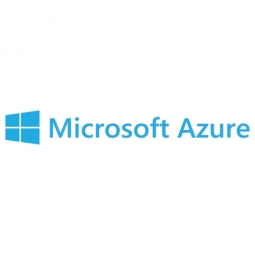技术
- 分析与建模 - 机器学习
- 平台即服务 (PaaS) - 应用开发平台
适用行业
- 电子商务
- 零售
适用功能
- 产品研发
- 销售与市场营销
用例
- 时间敏感网络
- 虚拟培训
服务
- 云规划/设计/实施服务
- 培训
关于客户
艾伯森公司是一家领先的连锁超市,总部位于爱达荷州博伊西。该公司成立于 1939 年,在 34 个州和哥伦比亚特区经营 20 个品牌的 2,200 多家超市。 Albertsons 是北美第二大连锁超市,也是美国最大的零售雇主之一,拥有约 30 万名员工。该公司希望通过更加个性化的客户营销实现运营现代化并增强全渠道体验。
挑战
Albertsons Companies 是北美一家大型连锁超市,面临着实现运营现代化以满足快速变化的市场需求的挑战。 COVID-19 大流行的爆发加速了这种转型的需求,因为在线订单在几个月内激增了 240%。该公司需要更快地运营和创新,以保持竞争力并满足客户不断增长的在线购物需求。 Albertsons 决定将其本地数据中心迁移到云,以利用云技术提供的可扩展性、灵活性、弹性和敏捷性。然而,该公司需要专家的帮助来确保顺利、成功地过渡到云。
解决方案
Albertsons 与 Microsoft Industry Solutions 合作,将其整个数据中心迁移到 Microsoft Azure。第一步是建立整个企业成功数字化转型所需的基础技术基础设施。 Microsoft 团队在短短九个多月内执行了敏捷、全面且全面的 Azure 云基础计划,使 Albertsons 能够满足大流行期间不断增长的在线购物需求。 Microsoft 还为 Albertsons 员工提供了培训,以确保顺利过渡到 Azure。培训包括观摩机会、与产品团队的会议以及正式的课堂式培训。 Microsoft 现代服务管理 (MSM) 团队还帮助 Albertsons 对技术和数字电子商务平台进行运营监控和支持。
运营影响
数量效益

Case Study missing?
Start adding your own!
Register with your work email and create a new case study profile for your business.
相关案例.

Case Study
Improving Production Line Efficiency with Ethernet Micro RTU Controller
Moxa was asked to provide a connectivity solution for one of the world's leading cosmetics companies. This multinational corporation, with retail presence in 130 countries, 23 global braches, and over 66,000 employees, sought to improve the efficiency of their production process by migrating from manual monitoring to an automatic productivity monitoring system. The production line was being monitored by ABB Real-TPI, a factory information system that offers data collection and analysis to improve plant efficiency. Due to software limitations, the customer needed an OPC server and a corresponding I/O solution to collect data from additional sensor devices for the Real-TPI system. The goal is to enable the factory information system to more thoroughly collect data from every corner of the production line. This will improve its ability to measure Overall Equipment Effectiveness (OEE) and translate into increased production efficiencies. System Requirements • Instant status updates while still consuming minimal bandwidth to relieve strain on limited factory networks • Interoperable with ABB Real-TPI • Small form factor appropriate for deployment where space is scarce • Remote software management and configuration to simplify operations

Case Study
Digital Retail Security Solutions
Sennco wanted to help its retail customers increase sales and profits by developing an innovative alarm system as opposed to conventional connected alarms that are permanently tethered to display products. These traditional security systems were cumbersome and intrusive to the customer shopping experience. Additionally, they provided no useful data or analytics.

Case Study
How Sirqul’s IoT Platform is Crafting Carrefour’s New In-Store Experiences
Carrefour Taiwan’s goal is to be completely digital by end of 2018. Out-dated manual methods for analysis and assumptions limited Carrefour’s ability to change the customer experience and were void of real-time decision-making capabilities. Rather than relying solely on sales data, assumptions, and disparate systems, Carrefour Taiwan’s CEO led an initiative to find a connected IoT solution that could give the team the ability to make real-time changes and more informed decisions. Prior to implementing, Carrefour struggled to address their conversion rates and did not have the proper insights into the customer decision-making process nor how to make an immediate impact without losing customer confidence.

Case Study
Ensures Cold Milk in Your Supermarket
As of 2014, AK-Centralen has over 1,500 Danish supermarkets equipped, and utilizes 16 operators, and is open 24 hours a day, 365 days a year. AK-Centralen needed the ability to monitor the cooling alarms from around the country, 24 hours a day, 365 days a year. Each and every time the door to a milk cooler or a freezer does not close properly, an alarm goes off on a computer screen in a control building in southwestern Odense. This type of alarm will go off approximately 140,000 times per year, equating to roughly 400 alarms in a 24-hour period. Should an alarm go off, then there is only a limited amount of time to act before dairy products or frozen pizza must be disposed of, and this type of waste can quickly start to cost a supermarket a great deal of money.

Case Study
Supermarket Energy Savings
The client had previously deployed a one-meter-per-store monitoring program. Given the manner in which energy consumption changes with external temperature, hour of the day, day of week and month of year, a single meter solution lacked the ability to detect the difference between a true problem and a changing store environment. Most importantly, a single meter solution could never identify root cause of energy consumption changes. This approach never reduced the number of truck-rolls or man-hours required to find and resolve issues.








